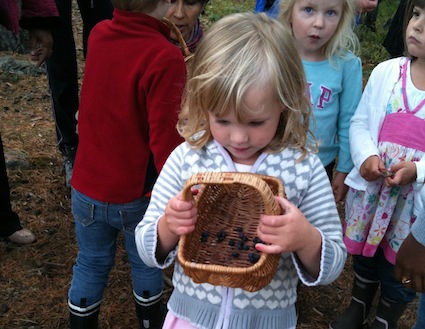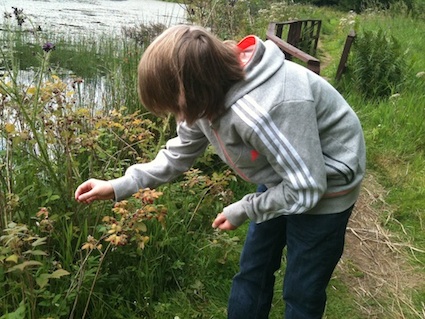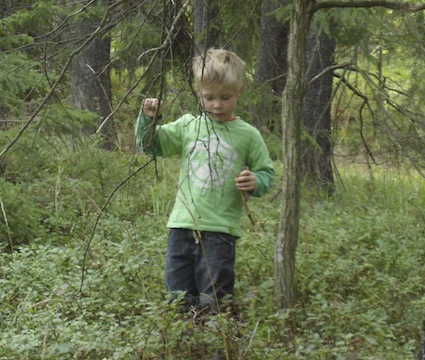I have a very small garden. It suffers from benign neglect. It is my Garden of Experiments. I used to see what will grow happily if not looked after very well. My theory was that the plants which flourish here will survive the ins and outs of a school garden.

I started adding summer fruits to my garden back in 2010. A friend passed on some spare strawberry plants. I went out and bought some raspberry plants, a blackcurrant bush, a gooseberry bush and several alpine strawberry plants. Remarkably all have survived, although this the first year the gooseberry bush has produced a decent crop in spite of a sawfly invasion.
My gran was an avid gardener with a big garden. One of the things she didn’t mind any of her grandchildren doing was wandering around foraging for food. Occasionally we’d be asked to leave certain plants alone if a meal was planned. But some of my strongest memories are searching for tiny alpine strawberries along the pathways up to the vegetable garden, greedily eating peas straight from the pod and helping myself to copious amounts of raspberries, along the lines of “one for my mouth and one for the bowl.” I rather suspect this was the tactic used by the girl in the photo below too…

Upon reflection, it was probably this freedom to forage that got me interested in gardening. There is something fun and addictive about finding ripe fruit to eat straight from the plant. It’s a compulsion!
Unfortunately for Scottish schools, most summer fruit arrives as the holidays begin. This is intentional in that our holidays are mapped out in accordance with the farming year. Our fortnight holiday in October is still known as the “Tattie” holidays. It is possible to find varieties which fruit earlier or later so that a fruit crop can avoid the height of the summer holidays. A good example is “Autumn Treasure” variety of raspberry that produces an autumn crop that is disease resistant, produces lovely conical berries and is thornless (oh yes!). Saying this, the summer fruits are an incentive to get volunteers to weed and water the garden through the summer. A good exchange can be fostered whereby any summer volunteer gets to keep what he or she harvests and forages from the school garden.

On a more educational front, I love the learning that is acquired through foraging. You have to mind the thorns and decide whether a berry is suitably ripe. The inclusion of other berries which are less palatable without being cooked is deliberate too. You learn to be sure which berries are meant to be foraged and which need cooked, as well as those which should be left alone completely. Without this knowledge, children may end up believing that all berries are bad or that any berry is good to eat. I’ve come across both extremes in the one school!

When I was last in Sweden, I loved seeing the children on their Skogsmulle walk freely foraging for blaeberries. The boy in the photo had a wonderful purple mouth for the rest of the morning. And, no, none of the children were asked to wash the fruit before popping it into their mouths or their hands either. If you feel that the routines and expectations in your school or setting wouldn’t enable this level of freedom, then take along a bottle of water – spray ones are especially good -and let the children give the berries a quick skoosh first.
Foraging advice and guidance – 2021 update
If you are foraging for fruit in a local greenspace, additional laws and codes of practice need to be followed along with a good dose of common sense. I created this brief download which gives some advice and signposting to further information. Nature Scotland has also produced this colourful guide to foraging. The Scottish Government ELC guidance, Out to Play also has specific advice on foraging.




















Juliet, your posts more than all the others I read somehow transport me back to wonderful childhood memories. As a child, I was always down at the river, the Mississippi River. It was a wild, undeveloped place that we were not suppose to go to. While exploring the river bottoms one day my friends and I came across a wild plum tree. I did not like plums, but the plums on this tree were perfectly ripe and we ate. To this day, over 50 years later, I have not tasted a better plum. Thanks for prompting the memory.